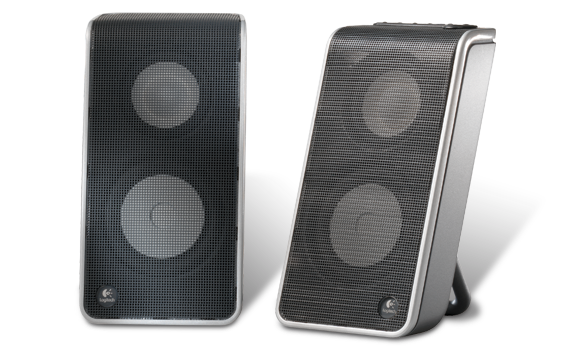If you want to write raw ethernet frames, you can use so-called raw sockets. Unfortunately, there's a difference between raw sockets under Linux and raw sockets under BSD and derivatives such as Apple's OS X. Linux allows you to create custom ethernet frames with whatever content you want, but BSD assumes you will create IP (internet protocol) packets.
In my case, I wanted to write raw ethernet frames, as in: have complete control of the contents. The content didn't have anything to do with internet; at work we use ethernet to talk to custom electronics. The electronics doesn't contain enough processing power to have a full TCP/IP stack, when ethernet is perfectly fine.
Note: I've tested the code below on OS X, version 10.7 (Lion). I've checked the output using tcpdump on the other end (a Linux box). Most code is from Bastian Rieck's excellent piece "Using FreeBSD's BPF device with C/C++". The only real addition is the write_frames routine that chops up your data before sending it.
#include <sys/types.h>
#include <sys/uio.h>
#include <unistd.h> #include <stdlib.h>
#include <stdio.h>
#include <fcntl.h>
#include <string.h> #include <sys/ioctl.h>
#include <sys/socket.h>
#include <arpa/inet.h> #include <net/if.h>
#include <net/ethernet.h>
#include <net/bpf.h> // Fill in your source and destination MAC address
unsigned char dest_mac[ETHER_ADDR_LEN] = {0x00, 0x1b, 0x21, 0x53, 0x83, 0x4f};
unsigned char src_mac[ETHER_ADDR_LEN] = {0xc8, 0xbc, 0xc8, 0x91, 0x79, 0x2d}; // My struct for an ethernet frame. There are many like it, but this one is
// mine.
struct frame_t {
struct ether_header header;
unsigned char payload[ETHER_MAX_LEN - ETHER_HDR_LEN];
ssize_t len;
ssize_t payload_len;
}; // Some convenience constants
const size_t ETHER_PAYLOAD_START = (2*ETHER_ADDR_LEN) + ETHER_TYPE_LEN;
const size_t ETHER_PAYLOAD_LEN = ETHER_MAX_LEN - ETHER_HDR_LEN - ETHER_CRC_LEN; // Try to open the bpf device
int open_dev(void)
{
char buf[ 11 ] = { 0 };
int bpf = 0;
int i = 0; for(i = 0; i < 99; i++ )
{
sprintf( buf, "/dev/bpf%i", i );
bpf = open( buf, O_RDWR ); if( bpf != -1 ) {
printf("Opened device /dev/bpf%i\n", i);
break;
}
}
if(bpf == -1) {
printf("Cannot open any /dev/bpf* device, exiting\n");
exit(1);
}
return bpf;
} // Associate bpf device with a physical ethernet interface
void assoc_dev(int bpf, char* interface)
{
struct ifreq bound_if; strcpy(bound_if.ifr_name, interface);
if(ioctl( bpf, BIOCSETIF, &bound_if ) > 0) {
printf("Cannot bind bpf device to physical device %s, exiting\n", interface);
exit(1);
}
printf("Bound bpf device to physical device %s\n", interface);
} // Set some options on the bpf device, then get the length of the kernel buffer
int get_buf_len(int bpf)
{
int buf_len = 1; // activate immediate mode (therefore, buf_len is initially set to "1")
if( ioctl( bpf, BIOCIMMEDIATE, &buf_len ) == -1 ) {
printf("Cannot set IMMEDIATE mode of bpf device\n");
exit(1);
} // request buffer length
if( ioctl( bpf, BIOCGBLEN, &buf_len ) == -1 ) {
printf("Cannot get bufferlength of bpf device\n");
exit(1);
}
printf("Buffer length of bpf device: %d\n", buf_len);
return buf_len;
} // Read one or more frames
void read_frames(int bpf, int buf_len)
{
int read_bytes = 0; struct frame_t *frame;
struct bpf_hdr *bpf_buf = (struct bpf_hdr*) malloc(buf_len);
struct bpf_hdr *bpf_packet;
int run_loop = 1;
int i = 0; printf("Start reading frames\n"); while(run_loop) {
memset(bpf_buf, 0, buf_len); if((read_bytes = read(bpf, bpf_buf, buf_len)) > 0) {
printf("Read %d\n", i);
i++; // read all packets that are included in bpf_buf. BPF_WORDALIGN is used
// to proceed to the next BPF packet that is available in the buffer. char* ptr = (char*)bpf_buf;
while(ptr < ((char*)(bpf_buf) + read_bytes)) {
bpf_packet = (struct bpf_hdr*)ptr;
frame = (struct frame_t*)((char*) bpf_packet + bpf_packet->bh_hdrlen);
frame->len = bpf_packet->bh_caplen;
frame->payload_len = frame->len - (2*ETHER_ADDR_LEN) - ETHER_TYPE_LEN;
// Do something with the frame
printf("Got packet, length of frame: %ld, length of data: %ld\n",
frame->len, frame->payload_len); ptr += BPF_WORDALIGN(bpf_packet->bh_hdrlen + bpf_packet->bh_caplen);
}
} else {
perror("Meh, couldn't read from bpf device");
exit(1);
}
}
} // Read a single frame
void read_single_frame(int bpf, int buf_len)
{
int read_bytes = 0;
int i; struct bpf_hdr* bpf_buf = malloc(buf_len);
memset(bpf_buf, 0, buf_len);
char *ptr; printf("Headerlength: %ld\n", sizeof(bpf_buf));
read_bytes = read(bpf, bpf_buf, buf_len); if(read_bytes > 0) {
printf("Got %d bytes\n", read_bytes);
} else {
printf("Got 0 bytes\n");
} ptr = (char*)bpf_buf;
for(i = 0; i < read_bytes; i++) {
unsigned char byte = (unsigned char) *(ptr + i);
printf("0x%02X ", byte);
}
printf("\n");
} // Write a single ethernet frame with test data
void write_single_frame(int bpf)
{
ssize_t data_length = 0x4F; struct frame_t frame;
memcpy(frame.header.ether_dhost, dest_mac, ETHER_HDR_LEN);
memcpy(frame.header.ether_shost, src_mac, ETHER_HDR_LEN);
frame.header.ether_type = 0x00;
frame.len = (2*ETHER_ADDR_LEN) + ETHER_TYPE_LEN + data_length; // Fill frame with ramp
unsigned char j;
for (j = 0; j < data_length; j++) {
frame.payload[j] = j;
} ssize_t bytes_sent;
bytes_sent = write(bpf, &frame, frame.len);
if(bytes_sent > 0) {
printf("Bytes sent: %ld\n", bytes_sent);
} else {
perror("Whoops! Does the device actually have an IP address?");
exit(1);
}
} // Divide data across ethernet frames
void write_frames (int bpf, const unsigned char *databuf, size_t datalen)
{
size_t start = 0; struct frame_t *frame = malloc(ETHER_MAX_LEN);
size_t bytes_to_send;
ssize_t bytes_sent; memcpy(frame->header.ether_dhost, dest_mac, ETHER_HDR_LEN);
memcpy(frame->header.ether_shost, src_mac, ETHER_HDR_LEN);
frame->header.ether_type = 0x0000; do {
// Clear frame
bzero((void*)(frame+ETHER_PAYLOAD_START), ETHER_PAYLOAD_LEN); // Calculate remainder
if((datalen - start) < ETHER_PAYLOAD_LEN) {
bytes_to_send = datalen - start;
} else {
bytes_to_send = ETHER_PAYLOAD_LEN;
} // Fill frame payload
printf("Copying payload from %lu, length %lu\n", start, bytes_to_send);
memcpy(frame->payload, (void*)(databuf + start), bytes_to_send);
frame->len = ETHER_HDR_LEN + bytes_to_send; // Note we don't add the four-byte CRC, the OS does this for us.
// Neither do we fill packets with zeroes when the frame length is
// below the minimum Ethernet frame length, the OS will do the
// padding.
printf("Total frame length: %lu of maximum ethernet frame length %d\n",
frame->len, ETHER_MAX_LEN - ETHER_CRC_LEN); bytes_sent = write(bpf, frame, frame->len);
// Check results
if(bytes_sent < 0 ) {
perror("Error, perhaps device doesn't have IP address assigned?");
exit(1);
} else if(bytes_sent != frame->len) {
printf("Error, only sent %ld bytes of %lu\n", bytes_sent, bytes_to_send);
} else {
printf("Sending frame OK\n");
} start += bytes_to_send;
} while (start < datalen);
free(frame);
} // Create a simple ramp so we can check the splitting of data across frames on
// the other side (using tcpdump or somesuch)
unsigned char* make_testdata(int len)
{
unsigned char *testdata = (unsigned char*)malloc(len); int i;
unsigned char j = 0;
for(i = 0; i < len; i++) {
testdata[i] = j;
j++;
if(j < sizeof(char)) {
j = 0;
}
}
return testdata;
} int main(void)
{
char* interface = "en0";
unsigned char* testdata;
size_t testdata_len = 4530;
int bpf;
int buf_len; bpf = open_dev();
assoc_dev(bpf, interface);
buf_len = get_buf_len(bpf); //read_single_frame(bpf, buf_len);
//read_frames(bpf, buf_len);
testdata = make_testdata(testdata_len);
write_frames(bpf, testdata, testdata_len);
exit(0);
}





















































